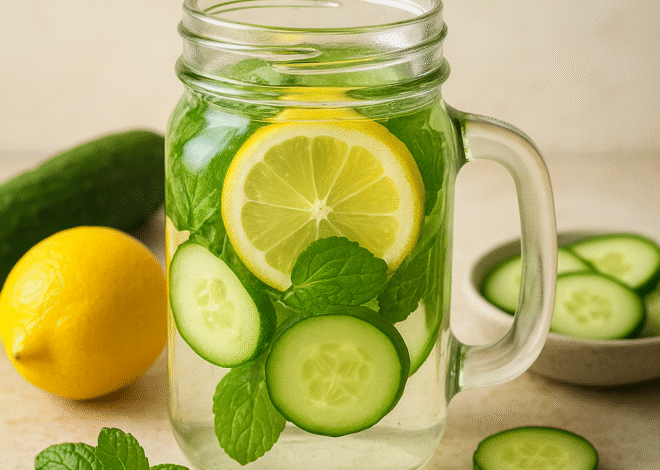
The Clean Kitchen Guide: Ensuring Food Safety at Home

In the pursuit of a healthy lifestyle, one of the most crucial yet often overlooked aspects is food safety. With an increasing focus on nutritious diets, it’s imperative to ensure that the food we consume is not only healthy but also safe. A clean kitchen is the cornerstone of effective food safety practices, and understanding how to maintain it can significantly reduce the risk of foodborne illnesses. This guide aims to provide you with essential tips for keeping your kitchen clean and ensuring food safety at home.
Understanding Food Safety
Food safety refers to the practices and procedures that prevent foodborne illnesses, which can arise from bacteria, viruses, or parasites contaminating food. According to the World Health Organization (WHO), an estimated 600 million people fall ill after eating contaminated food, resulting in 420,000 deaths annually. These alarming statistics underscore the importance of food safety in our kitchens.
The Importance of a Clean Kitchen
A clean kitchen minimizes the risk of cross-contamination and the growth of harmful bacteria. Regular cleaning and organization can help create a safe cooking environment, allowing you to focus on preparing healthy meals without the worry of contamination.
1. Establish a Cleaning Routine
Create a consistent cleaning schedule to maintain hygiene in your kitchen. Here are some key areas to focus on:
- Daily Cleaning: Wipe down countertops, stovetops, and tables with warm, soapy water after each use. This helps eliminate bacteria and prevent cross-contamination.
- Weekly Deep Cleaning: Dedicate time each week to clean appliances, the refrigerator, and kitchen floors. Remove any expired food items and organize pantry shelves.
- Monthly Maintenance: Inspect your kitchen for any signs of pests, and take preventive measures if necessary. This includes sealing cracks and ensuring all food is stored properly.
2. Organize Your Kitchen Wisely
An organized kitchen not only makes cooking more enjoyable but also helps in maintaining food safety. Here are some tips for effective kitchen organization:
- Separate Raw and Cooked Foods: Always store raw meats, poultry, and seafood on the bottom shelf of your refrigerator to avoid drips contaminating other foods. Keep cooked foods on the upper shelves.
- Label and Date Your Food: Use clear labels and dates on containers to track when food was prepared or opened. This practice helps you use items before they expire, reducing the risk of spoilage.
- Designate Specific Areas: Allocate separate spaces for different food groups. For example, keep fruits and vegetables in one area and dairy in another. This prevents cross-contamination and helps you keep track of what you have on hand.
3. Practice Safe Food Handling
Food handling is critical to preventing foodborne illnesses. Here are essential practices to follow:
- Wash Your Hands: Always wash your hands with soap and warm water before and after handling food, especially raw meat or poultry. This simple act is a game-changer in preventing cross-contamination.
- Use Clean Utensils and Cutting Boards: Have separate cutting boards for raw meats and fresh produce. Wooden cutting boards can harbor bacteria, so consider using plastic ones that can be sanitized easily.
- Thaw Food Safely: Avoid leaving frozen food to thaw at room temperature. Instead, use the refrigerator, cold water, or the microwave for thawing. This prevents harmful bacteria from growing as the food sits at unsafe temperatures.
4. Storing Food Properly
Proper food storage is essential to maintaining freshness and safety. Here are tips to ensure your food stays safe to eat:
- Temperature Control: Keep your refrigerator at 40°F (4°C) or lower and your freezer at 0°F (-18°C). These temperatures help inhibit bacterial growth.
- Store Leftovers Safely: Refrigerate leftovers ASAP. Keep them in airtight containers and label them with the date they were made. Usually, leftovers should be eaten within three to four days.
- Check Expiration Dates: Regularly review the expiration dates of items in your pantry and refrigerator. Discard anything that is past its date to prevent potential foodborne illnesses.
5. Stay Informed and Educated
Staying informed about food safety practices is crucial for everyone in the household. Here are ways to enhance your knowledge:
- Read Up on Food Safety Guidelines: Organizations like the USDA and FDA provide extensive resources on food safety practices. Familiarizing yourself with these guidelines can help reinforce safe practices in your kitchen.
- Take a Food Safety Course: Consider enrolling in a food safety certification course, especially if you frequently prepare meals for family and friends. Many courses offer valuable information that can be applied in your home kitchen.

The Role of Nutrition in Food Safety
While focusing on cleanliness and safety, it’s essential to remember that the foods you choose also play a role in overall health. Prioritizing nutrient-dense foods can boost your immune system and support your body’s ability to fight off infections. Here are some diet-focused tips to consider:
- Incorporate Fresh Produce: Fresh fruits and vegetables are not only packed with essential vitamins and minerals but also contain antioxidants that support immune health. Always wash them thoroughly before consumption.
- Choose Whole Grains: Whole grains like brown rice, quinoa, and whole wheat bread provide essential nutrients and fiber. Keep them in airtight containers to keep them fresh and crisp.
- Opt for Lean Proteins: Incorporate lean meats, fish, beans, and legumes into your diet. These protein sources are not only nutritious but can also be safely stored and prepared when following proper food safety practices.
Conclusion
Maintaining a clean kitchen and practicing safe food handling is paramount for ensuring food safety at home. By establishing a routine, organizing your space, practicing safe food handling, and staying informed, you can significantly reduce the risk of foodborne illnesses. Remember, a healthy kitchen leads to a healthier you. Prioritize cleanliness, safety, and nutrition to create a thriving environment for you and your family. The benefits will extend beyond the kitchen, impacting your overall well-being and quality of life.










